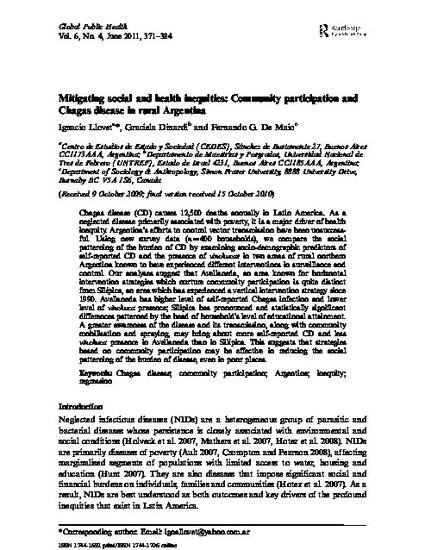
Article
Mitigating social and health inequities: Community participation and Chagas disease in rural Argentina
Global Public Health
(2011)
Abstract
Chagas disease (CD) causes 12,500 deaths annually in Latin America. As a neglected disease primarily associated with poverty, it is a major driver of health inequity. Argentina's efforts to control vector transmission have been unsuccessful. Using new survey data (n=400 households), we compare the social patterning of the burden of CD by examining socio-demographic predictors of self-reported CD and the presence of vinchucas in two areas of rural northern Argentina known to have experienced different interventions in surveillance and control. Our analyses suggest that Avellaneda, an area known for horizontal intervention strategies which nurture community participation is quite distinct from Silipica, an area which has experienced a vertical intervention strategy since 1990. Avellaneda has higher level of self-reported Chagas infection and lower level of vinchuca presence; Silipica has pronounced and statistically significant differences patterned by the head of household's level of educational attainment. A greater awareness of the disease and its transmission, along with community mobilisation and spraying, may bring about more self-reported CD and less vinchuca presence in Avellaneda than in Silipica. This suggests that strategies based on community participation may be effective in reducing the social patterning of the burden of disease, even in poor places.
Disciplines
Publication Date
2011
Citation Information
Ignacio Llovet, Graciela Dinardi and Fernando De Maio. "Mitigating social and health inequities: Community participation and Chagas disease in rural Argentina" Global Public Health Vol. 6 Iss. 4 (2011) Available at: http://works.bepress.com/fdemaio/13/
